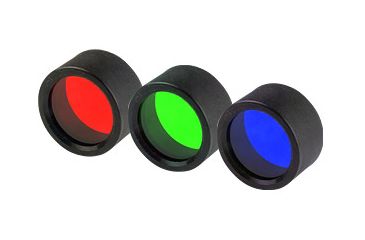Technological advances in bulbs, circuitry, battery efficiency, and LED (light-emitting diode) have created flashlights that are far superior to flashlights of only a few years ago. Choosing the right flashlight from the large variety of manufactures and models available in today's market can be a tedious task. To assist in the decision making process, you may find it beneficial to become familiar with some of the standards, technology and terminology provided below.
Flashlight Ratings
ANSI/NEMA FL1 Standards are a set of six different performance measurements to ensure that flashlights are tested and rated in a consistent manner. While compliance with these standards is voluntary, most major manufactures now use these ratings to assist in product evaluation.
![]()
Additional Features and Functions
Bulb Type - Advancements in LED technology have rendered other bulb types almost obsolete. Incandescents still exist in a few flashlight models, but it is hard to beat the energy efficiency, run time, impact resistance and brightness options of an LED flashlight.
- Incandescent Bulbs: Gasses sealed in incandescent bulbs, like xenon and halogen make the bulb brighter and increase the life of the filament. These bulbs are generally not very durable or shockproof, but they do offer an extremely bright white light and are easily focused. They are the most powerful, and are a great choice for long distances.
- LEDs: Light Emitting Diodes. LEDs have solid state construction and are extremely durable. Because of their long life (up to 100,000 hours) they do not require periodic replacement. They have a soft, easy glow and are great for close viewing. They are generally not nearly as powerful as incandescents.
- HIDs:High Intensity Discharge bulbs use a capsule of metal vapor instead of a filament. Many times brighter than standard incandescents, but require a ballast for current control. Bulbs last at least twice as long as incandescents and emit a very bright white light using less power.
Beam Type - The lens reflector that surrounds a bulb influences how the light is dispersed. The 3 common options:
- Flood (or fixed): A single beam width. Good for general tasks in camp or while walking.
- Spot (or focused): A single beam condensed into a spotlight to penetrate a long distance. This is best for route-finding or other fast-paced activity.
- Adjustable: Beam width ranges from wide to focused, or any point in-between. This means, for example, a climber looking for the next pitch would use a spot beam; to study a map, a flood beam.
Regulated Output - Lights with a regulated power supply maintain a steady, near-peak brightness level throughout most of the batteries' life cycle. Near the end, however, light output drops off abruptly and significantly. Unregulated lights start bright then progressively grow dimmer as they drain power from the batteries.
- Three volt lithium disposable batteries provide more power to comprable alkaline batteries. It would take about 2.5 alkaline batteries to match the power output of one lithium battery, and one lithium battery weighs about half as much as an alkaline. An additional contrast between Alkaline and Lithium batteries is voltage drop. Lithium batteries stay very consistant as high as 95% of their life, while alkaline batteries drop voltage at a much higher rate.
- Rechargeable: Rechargeable flashlights have extraordinarily low operating expense and are well suited to frequent use. They can often support a brighter bulb or LED. The initial purchase price is usually higher and they self-discharge at a higher rate when in storage.
- Renewable: Flashlights with a built-in battery energized by a hand crank or solar panel are ideal for emergency kits.
Modes - A single setting is sufficient for general-purpose use. Some models offer 2 or more modes like low, medium, high and boost. You may rarely use more than one mode, but having the option to throw an extra-strong beam on demand can be reassuring. The brighter the mode, the shorter the runtime. Some models may offer special modes like a strobe or SOS feature.
Controls - The type of on/off and lighting mode switches is important for some users. Push buttons and sliders are typically thumb operated. A rotating bezel can also serve as a switch, requiring 2 hands to operate. A safety lock feature prevents the light from being accidentally turned on.
Some lights feature a silent (non-clicking) insta-beam function in which slightly depressing the switch activates the light until either a full click leaves it on, or releasing the switch turns it off, without having to cycle through all modes.
Materials and Shape - Most flashlight bodies are either plastic or aluminum alloy. Some feature stainless steel in the head of the flashlight for extra impact resistance. Not all aluminum bodies are the same thinner styles are lighter, thicker ones are tougher.
Cylindrical bodies are the most common shape, but as these tend to roll around when laid on a surface, some models are profiled to resist rolling. Additionally, the surface of the body may have a knurled pattern to provide grip and reduce slipping.
Size and Weight - This is mostly personal preference. A larger, heavier unit is not necessarily brighter, but it is likely to feature an extended run time due to a greater battery capacity.
Accessories - Include a lanyard, belt clip or holster, and lens filters and diffusers to provide lighting options.


